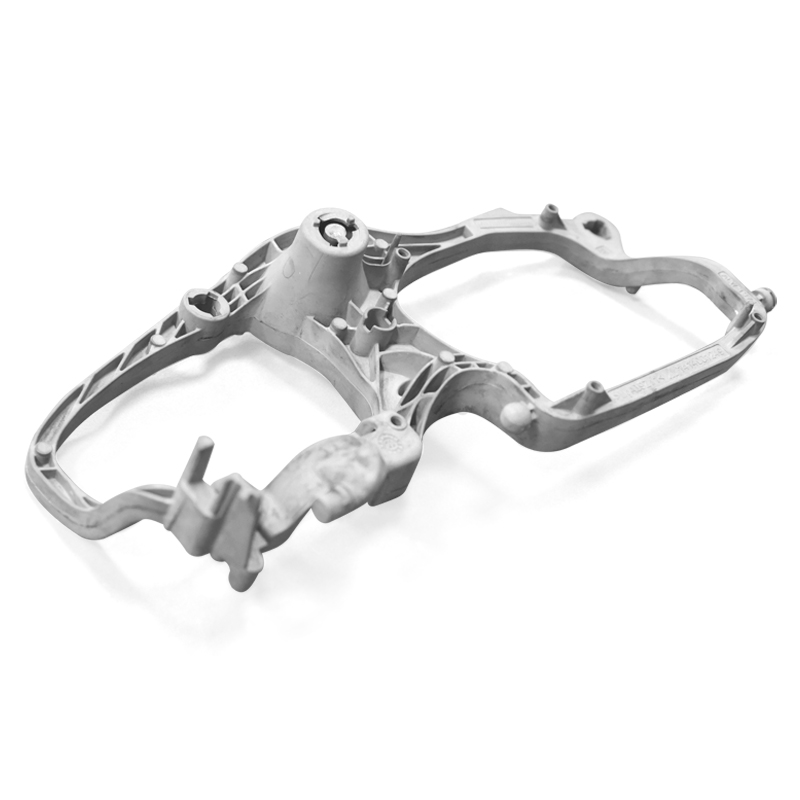Introduction
Aluminum die casting is a popular manufacturing process used to produce intricate and precise metal parts. The key to achieving high-quality results lies in designing a suitable mold. This guide aims to provide a comprehensive understanding of the process involved in creating an aluminum die cast mold, focusing on the importance of precision and durability.
I. Understanding Aluminum Die Casting
To fully grasp the significance of mold design, it is important to have a basic understanding of the die casting process. Aluminum die casting involves injecting molten aluminum into a mold cavity under high pressure, resulting in the formation of the desired shape. The mold plays a crucial role in determining the final product\’s quality, accuracy, and durability.
II. Mold Design Considerations
A. Material Selection
Choosing the right material for the mold is crucial to ensure its durability and longevity. Aluminum is a popular choice due to its excellent thermal conductivity and corrosion resistance. Additionally, it is lightweight, making it easier to handle and maintain.
B. Parting Line and Draft Angle
The parting line refers to the line where the two halves of the mold meet. It is essential to carefully determine the parting line to avoid any undercut or complex features. A draft angle is also necessary to facilitate the ejection of the part from the mold. A minimum draft angle of 1° to 2° is typically recommended.
C. Wall Thickness and Rib Design
Uniform wall thickness is crucial to prevent defects such as shrinkage and porosity. It is important to maintain consistent wall thickness throughout the part. Additionally, the use of ribs can help enhance the structural integrity of the part while minimizing material usage.
D. Cooling System
Efficient cooling is essential to ensure the proper solidification of the molten aluminum and prevent defects in the final product. Designing an effective cooling system, incorporating channels and baffles, helps maintain uniform temperature distribution, reducing cycle time and improving productivity.
III. Precision in Mold Design
A. Tolerances
Precision is crucial in mold design to achieve accurate and consistent dimensions in the final product. Tolerances should be carefully considered and specified to ensure the desired level of precision is achieved. The design should account for factors such as shrinkage and dimensional variations due to the casting process.
B. Fillets and Radii
Sharp corners and edges can lead to stress concentration and potential failure in the final part. Incorporating fillets and radii in the mold design helps distribute stress more evenly, resulting in improved strength and durability of the part.
C. Ejection System
The ejection system plays a critical role in removing the part from the mold. It is important to design an efficient ejection system that minimizes the risk of part sticking or damage during ejection. Properly placed ejector pins and appropriate surface finishes can help ensure smooth part ejection.
IV. Durability of the Mold
A. Mold Material and Hardness
Selecting a high-quality mold material and ensuring the appropriate hardness is essential for mold durability. The mold should be able to withstand the high temperatures and pressures involved in the die casting process without deformation or wear.
B. Surface Treatment
Applying appropriate surface treatments, such as nitriding or chrome plating, can significantly enhance mold durability. These treatments improve the mold\’s resistance to wear, corrosion, and abrasive forces, extending its lifespan and reducing maintenance requirements.
C. Maintenance and Cleaning
Regular maintenance and cleaning are crucial to extending the mold\’s lifespan. Proper cleaning techniques and the use of suitable cleaning agents help remove residual aluminum and prevent the buildup of contaminants that can affect mold performance.
Conclusion
Designing an aluminum die cast mold requires careful consideration of various factors to ensure the production of precise and durable parts. Attention to detail in material selection, mold design, precision, and durability is essential for achieving high-quality results. By following this guide, manufacturers can create molds that meet the demands of the aluminum die casting process and produce superior metal parts.
-

- 2022 Wholesale Hot Sale Bicycle Parts Magnesium Alloy Children Bike No Pedal Balance Bicycle Kids Multiple Colors Available
-

- Magnesium alloy die-casting wheel for ebike
-

- parts&comopnents for bicycle suspension fork for MTB
-

- Customized foundry products e-bike components magnesium alloy wheel
-

- Customized die-casting parts&components
-

- CNC machining auto dashboard bracket

 0086-750-5616188
0086-750-5616188 +86 13392089688
+86 13392089688 sales@zhongmei-tech.com
sales@zhongmei-tech.com








